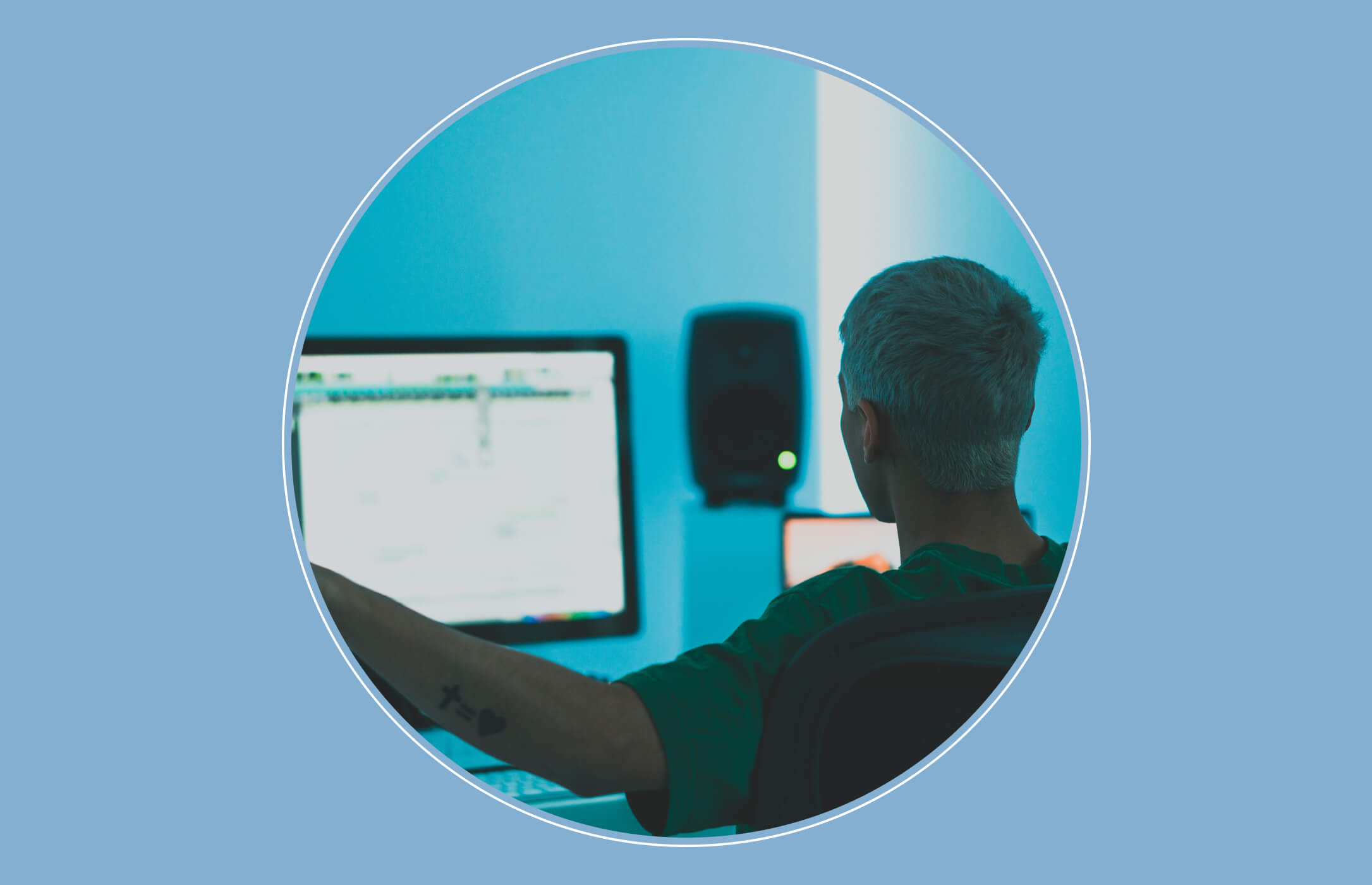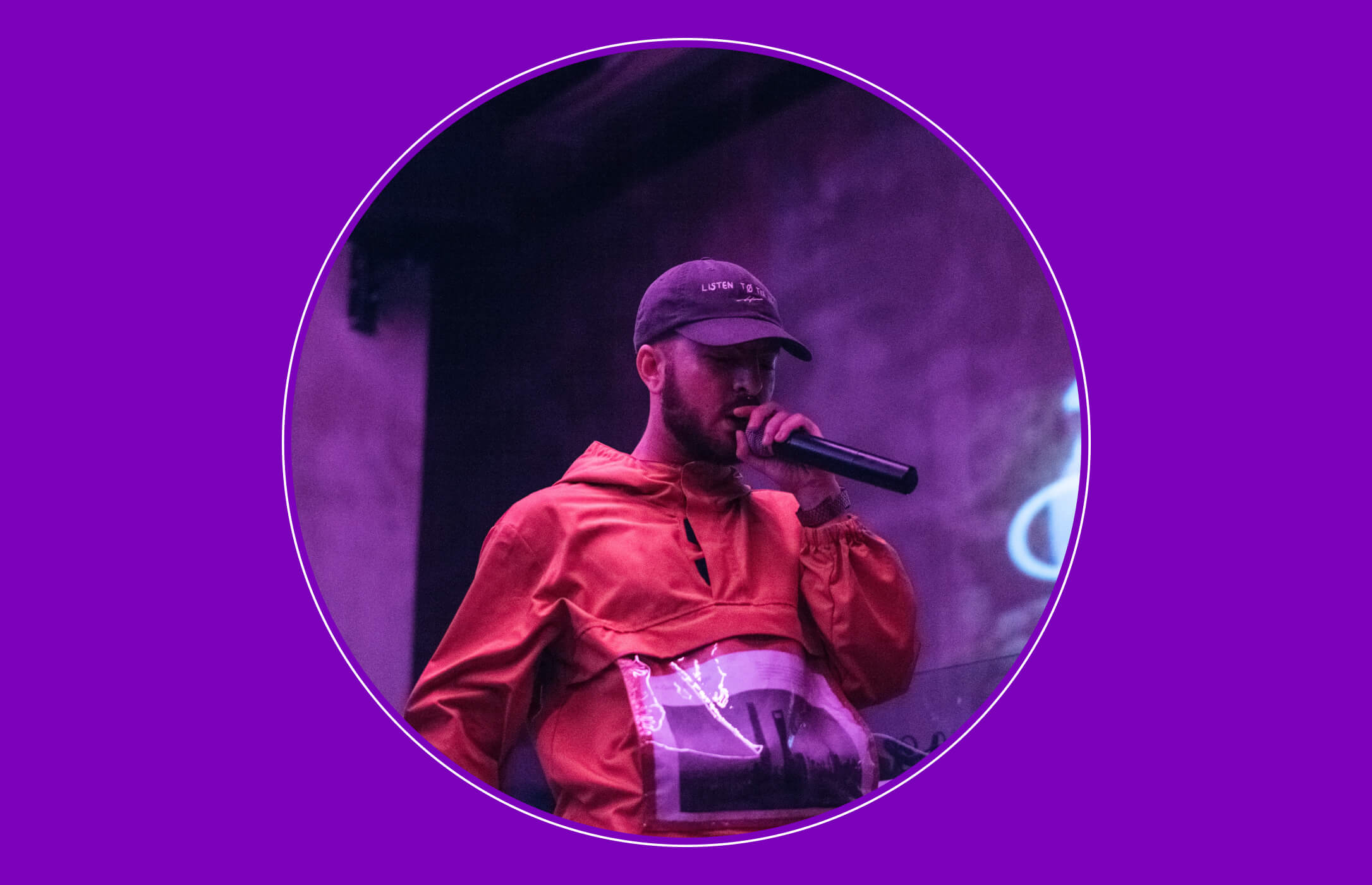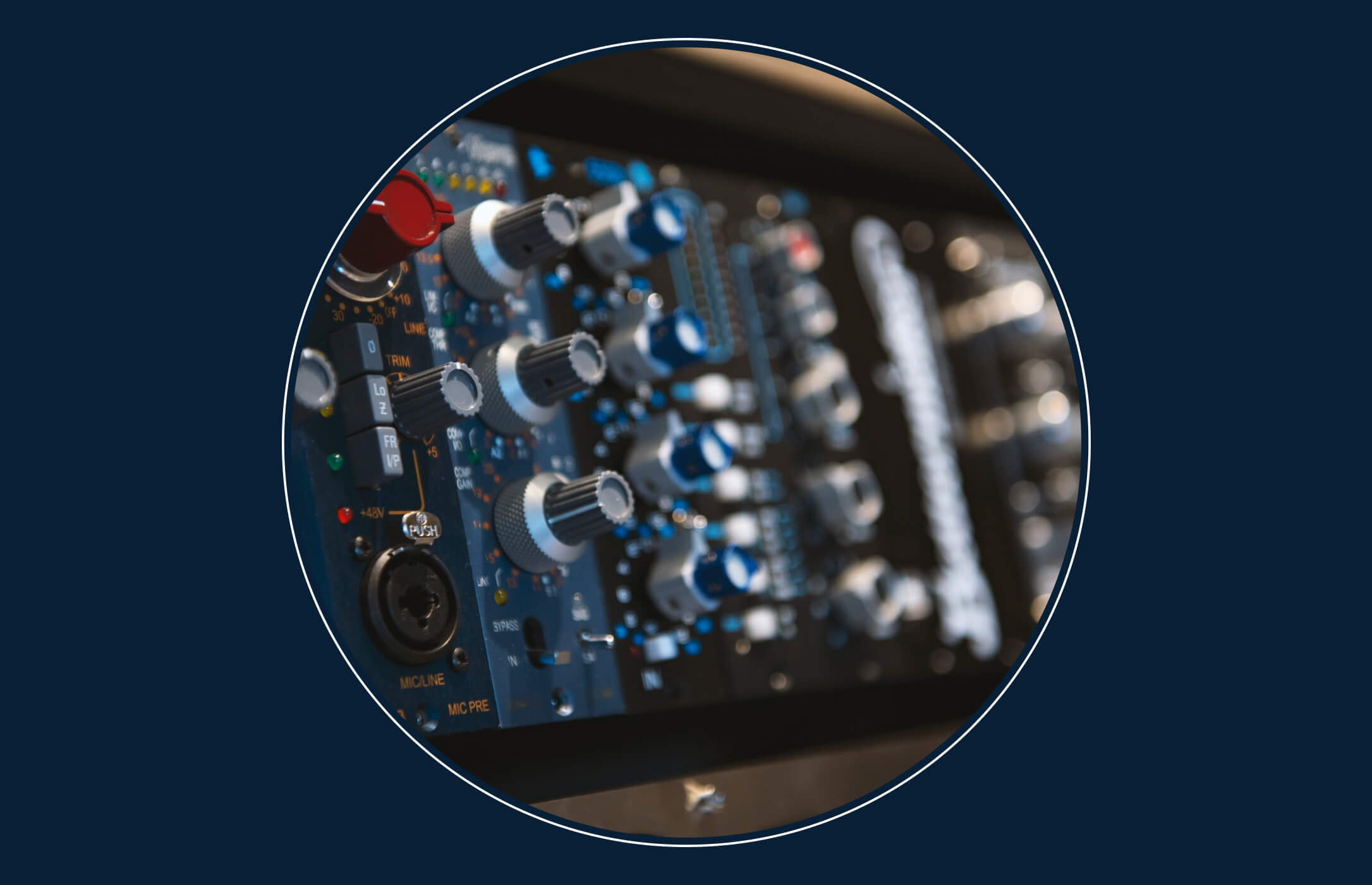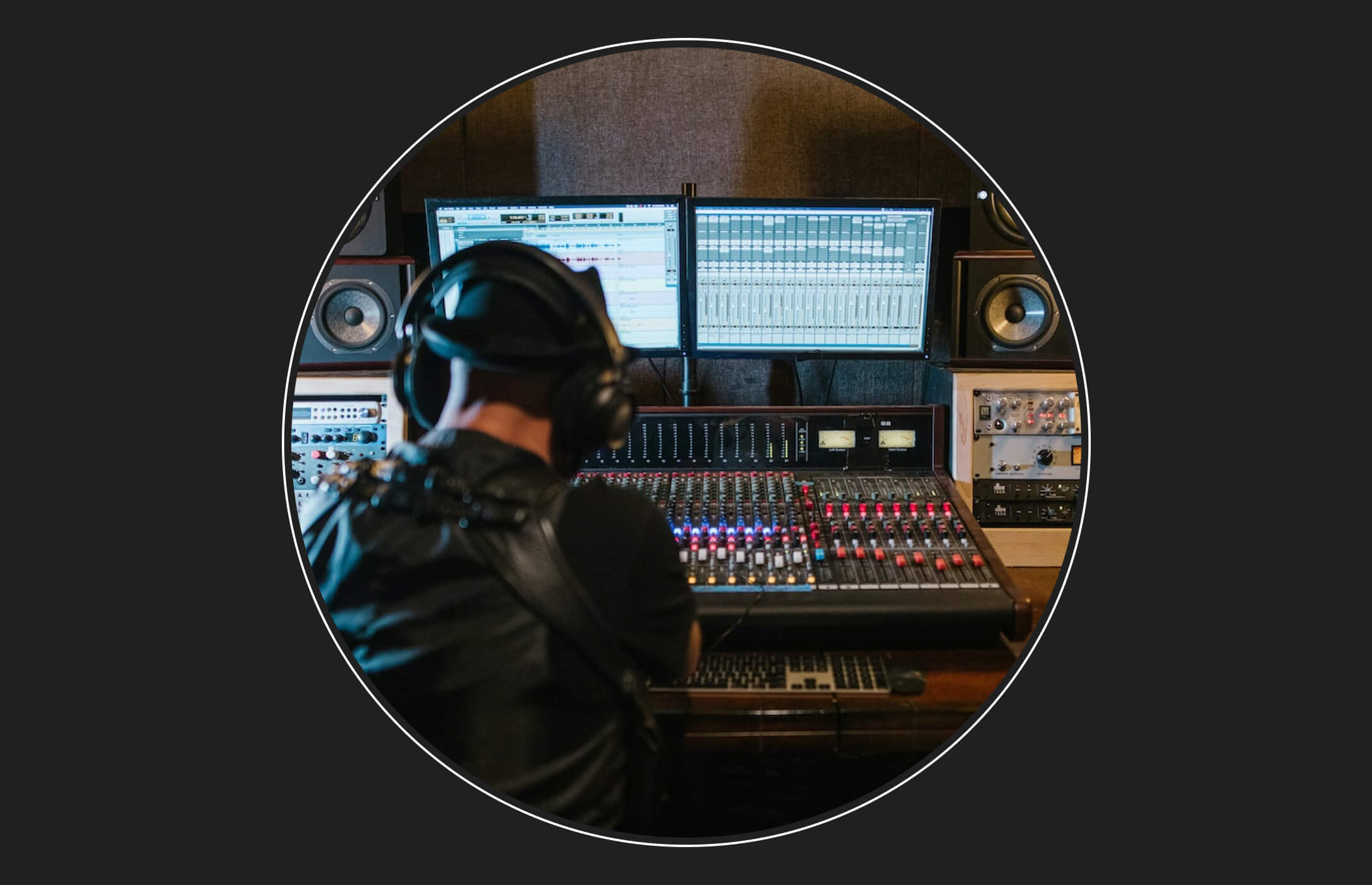How much headroom should you leave for mastering?
Contemporary music is an unpredictable combination of primitive and cutting-edge technologies. The Shure SM57 (1953), Fender Stratocaster (1954), Neumann U87 (1967), and many more pieces of gear were created in the 1950s and 1960s, and are still being used today. Yet, since the dawn of the digital era, technology has hurriedly advanced to alter the way music is created (even altering from year to year).
This fusion of tradition and innovation, of traditional knowledge and scientific accuracy, has resulted in a lot of confused and conflicting music production advice these days. Many frequently held beliefs are just false. Others used to be true, or were occasionally true, but are no longer relevant. For example, many people “know” that when mastering a recording, you should allow 6 dB headroom. And I said “know” on purpose, since it’s a lie. The only actual guideline at the time of writing (2019) is that your mix should not exceed 0 dB. The solution, though, is a little more difficult. If you want your music to genuinely shine, you need to learn more about it.
This article applies to any DAW for music production, including Pro Tools, Logic, Ableton, FL Studio, Reaper, Reason, and more. These criteria apply to all genres, including hip hop, rock, pop, indie, metal, punk, and folk. At this point, the fundamental principles are all the same.
Mixing vs Mastering
While the statement “how much headroom to allow for mastering” appears simple, many of the fundamental ideas are commonly misunderstood. The most fundamental is understanding what mastering is and how it connects to mixing.
Mixing and mastering were traditionally two independent procedures carried out by different persons. Mixing and mastering studios were built up differently, with distinct types of equipment being chosen for each. More engineers are now dealing with both on their own, and many musicians and producers mix and master their own music. Some electronic-oriented genres (such as pop, EDM, hip hop, RnB, and rap) include artists that naturally do a lot of mixing and mastering while composing the track!
Understanding the Term Definitions
To put it another way, “tracking” refers to the process of recording or producing instrumental tracks. Mixing entails adjusting the levels and tones of the musical recordings so that they blend together nicely. Individual levels, EQ, compression, reverb, and other parameters are tweaked so that each recording sounds just as it should. The final phase is “mastering.” The entire mix is handled in this phase to ensure that the total volume is at the correct amount. To give the overall product that “finished” professional shine, EQ, compression, limiters, and dynamic EQ or multiband compressors are employed. The phrase “producing” is a broad umbrella term that encompasses all aspects of music creation, including composing, arranging, tracking, mixing, and mastering.
Because you can’t see or touch music, it might be difficult to comprehend. Cooking is one of my favorite analogies for the process of producing music. It’s amazing how nicely it works. If a song is a dish, mixing is the act of putting the components together. Some components are cooked or seasoned separately before being added to the meal, while others are served raw. Mastering is equivalent to baking the entire dish at the same time.
Headroom for Mastering
The -6 dB Myth Explained
Before mastering, a mix should peak at about -6 dB, according to conventional belief. In fact, I sat down ready to regurgitate this misconception in my post before conducting further research. This is an out-of-date and pointless regulation that is arbitrary by today’s standards. However, it is not hazardous, and there may be benefits to following it in any case. It encourages you to concentrate on the sound of the mix rather than trying to make it overly loud during the mixing stage.
This rule may be traced back to the analog and early digital eras. Because analog tape does not have nearly as much tolerance for mistakes as digital recording, headroom is a more difficult notion to grasp. Tape recording is significantly noisier than digital recording. If you record too softly, the sound will be lost in the tape hiss, and if you record too loudly, the track will get distorted. Software was still being created and tuned in the early days of digital, and memory was more valuable. Without getting too scientific, the -6 dB myth was popular back then because it was less likely to add undesired noise from processing.
Now fast forward to the year 2019. 24-bit recording is typical, with virtually limitless headroom. Software and plug-ins have been fine-tuned to perfection. A mix with peaks of -12 dB, -6 dB, -3 dB, or slightly below 0 dB is appropriate for mastering as well.
Why Peak Below 0 dB
The loudness of music is measured using a unique scale. It’s backwards: virtually all of the values are negative, with 0 being the highest conceivable point. There’s a good explanation for it. The loudness of individual instrument tracks, or the master, should not cross this mark. Any sound that exceeds 0 dB is “clipped,” which means that everything over 0 is shut off. Clipping has a distorted electronic sound. While some types of distortion sound great (such as a vintage soul song or a Van Halen guitar solo), digital clipping isn’t one of them. It’s a harsh, unappealing sound that doesn’t help your mix.
Dynamic Range- The Most Important Rule Today
If you’re going to walk away from this article with any knowledge, let it be this. Simply because the amount of headroom for mastering is more flexible now, this does NOT mean there are no rules! Dynamic range is more important now than in the past. The biggest mistake mastering engineers tend to see is an overly-compressed mix.
People Like Loud Music
For decades, music producers have understood a basic truth: the more people that love a mix, the louder it is. This was the foundation for Phil Spector’s renowned wall-of-sound concept in the 1960s and 1970s, as well as the loudness wars of the 1990s and 2000s (see photo). The same recording was re-released with increasing levels of volume. However, the volume of music cannot be increased forever. Returning to the cooking analogy. We all know that salt and fats enhance the flavor of food, but we also know that too much of either may degrade it. Furthermore, we are aware of how we might become burned out from consuming salty and fatty foods for an extended period of time, as well as how this can be harmful to our health.
Remember how I stated that digital cutting was a terrible idea? Check out the Red Hot Chili Peppers’ version of “Californication,” often regarded as one of the most unfortunate victims of the loudness wars. You may not have noticed it before, but the album’s irritating distortion is difficult to ignore once you hear it.
Mastering, not mixing, is where the loudness comes in.
Listening to reference mixes to enhance your own is one of the finest general mixing techniques. Anyone who has attempted this, however, is well aware of how loud professional recordings can be. The desire to equal this volume while mixing is strong — after all, louder sounds better, and louder sounds more “professional.” Expect your track to be nowhere near as loud as the pro tracks while mixing. These have already been mastered, therefore the volume should be achieved there rather than at the mixing step.
I don’t recommend utilizing a limiter on the master bus when mixing. The temptation is evident once more. It enables you to make your mix louder and more “beefy” without exceeding the dreaded 0 dB barrier. A limiter, on the other hand, does this by compressing the mix and squeezing the dynamism out of it. If you deliver a compressed mix to a mastering engineer, they won’t be able to restore the lost dynamics. It’d be like attempting to de-scramble an egg.
Conclusion
I’ve addressed the fundamentals of a variety of topics here. There are a handful of key ideas to remember. Anyone who claims “for mastering, export at -6 dB” is perpetuating a falsehood. When exporting for mastering, your mix should never go below 0 dB. When mixing, avoid applying compression or a limiter on the master bus to avoid losing the mix’s dynamics. Do not compress your mix before lowering the master volume. Check out our tutorial for more information on how to make your mix feel louder without over-compressing it. If you’re having difficulties with any element of mixing or mastering, don’t be afraid to hire a pro — they’re often less expensive than you would expect, and they’re a fantastic way to learn by doing. Continue to be enthralled by the music!



